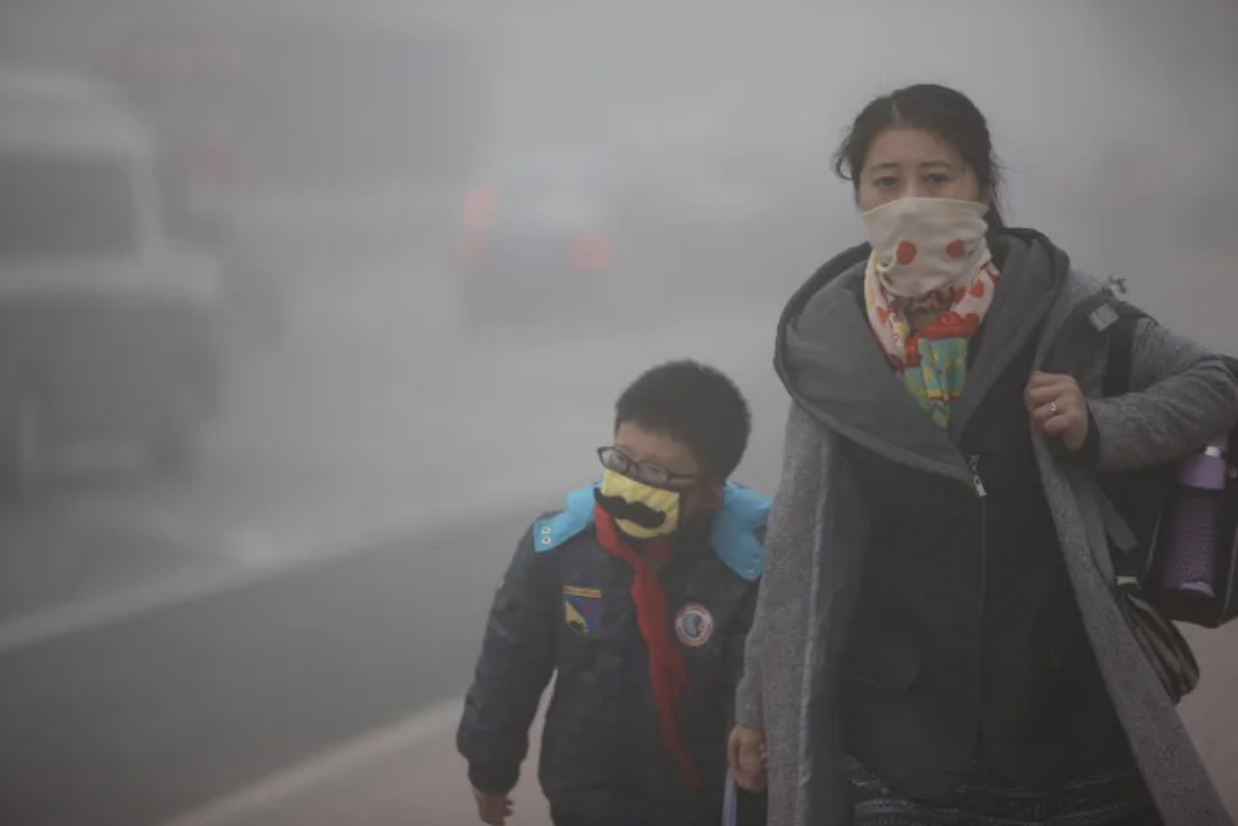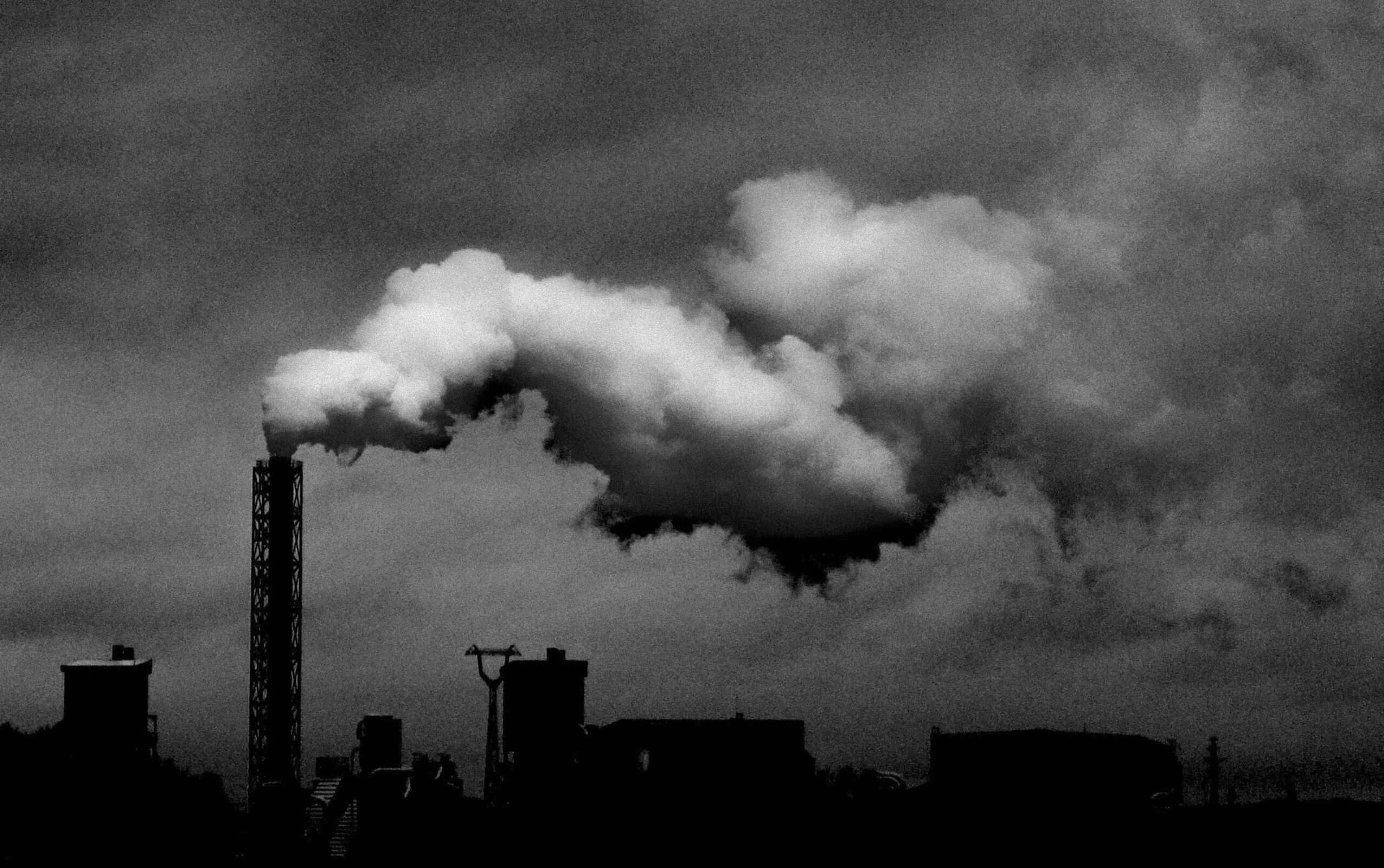Home to over 1.4 billion people, China has faced growing pollution challenges since the 1990s due to rapid industrialization that prioritized economic growth over environmental sustainability. This led to severe environmental and health impacts, ranking China 13th globally in pollution-related risks 2023. In recent years, however, the government has launched aggressive environmental reforms, deploying targeted policies, technological innovations, and large-scale initiatives to combat air pollution in China. This has resulted in measurable progress, signaling a shift toward balancing development and sustainability.
Download our Green Guilt Report on Sustainable Consumption in China

China’s environmental crossroads: Industrial dominance, health crisis, and the path to sustainable reform
As a result of rapid industrialization, China accounted for 30% of global manufacturing output in 2024, positioning it as an economic powerhouse but also a significant contributor to pollution. As the world’s largest coal consumer, it is responsible for 58% of global consumption in 2024.
China has also had a vehicle fleet reaching over 353 million in 2024, compared to the U.S. with 296 million. According to the Ministry of Ecology and Environment, emissions from automobiles exceeded 9 million tons of pollutants in 2024. This is especially evident in major cities like Beijing, Shanghai, and Jinan where mobile sources have become the primary cause of pollutant emissions, highlighting the role of transportation in deteriorating air quality in urban cities.
Moreover, while the World Health Organization (WHO) recognizes the seriousness of air pollution in China—estimating that air pollution causes approximately 2 million deaths annually—the public is more concerned. According to a consumer sensitivity study analyzing 469,340 air-pollution-related Weibo posts, from 2017 and 2021, public sensitivity to air pollution, especially PM2.5, tended to be higher in northern and inland regions where pollution levels were worse. Moreover, there were fewer negative posts in the summer, where air quality naturally improved through rainfall, wind, and other environmental conditions.
Navigating through China’s pollution crackdown
In 2013, PM2.5 levels in industrial regions spiked to 300 to 500 micrograms per cubic meter. This was over the WHO’s safe limit of 15 micrograms per cubic meter. Massive smog triggered widespread disruptions, including highway closures, flight cancellations, and school shutdowns. In response, China launched aggressive national initiatives to curb pollution.

The government introduced the landmark Air Pollution Prevention and Control Action Plan (2013) and the Three-Year Plan on Battle for Blue Skies (2018) budgeting RMB 270 billion nationally and an additional RMB 120 billion for Beijing, to overhaul industrial practices, phase out coal-dependent infrastructure, and promote clean energy. These measures contributed to the 53% reduction in PM2.5 concentrations from 2013 and 2021 in the Beijing-Tianjin-Hebei. In 2023, the average concentration from January to September was 17.6% below 2019 levels, even amidst industrial rebounds.
China’s 2015 Environmental Protection Law introduced unprecedented strictness that is still in place in 2025. It imposed uncapped daily fines, criminal liability for violations (e.g., illegal discharges, data fraud), and shutdowns for non-compliant enterprises, and mandated transparency and accountability for officials through performance-linked penalties. This underscores China’s shift toward stricter environmental governance with implications for global climate targets and green technology markets.
China’s dual push for clean air through clever incentives
With the government’s aggressive initiatives to curb pollution, China’s electric vehicle market has rapidly increased, supported by robust subsidies and strategic consumer incentives. A standout policy includes offering free license plates for EV owners, a significant motivator in cities like Beijing and Shanghai, where license plates average RMB 90,000 in 2024. In comparison, in 2024, the average price of a new vehicle was RMB 169,000, meaning a license plate would cost an additional 50% to the price of an average vehicle. This generous incentive alone has played a pivotal role in driving EV adoption, propelling China to global dominance in EV production and sales.
Alongside policy support, rising public awareness of pollution’s health risks has shifted consumer behavior. City-level panel data from 2014 to 2020 reveals a direct correlation between worsening air quality and EV demand. A 1% increase in PM2.5 concentrations corresponded to a 3.2% to 5.6% surge in EV purchases.
Fast forward to today, around half of passenger car sales were EVs in 2024, highlighting how environmental urgency is reshaping market dynamics. State-driven financial incentives and citizen-led demand for cleaner alternatives reflect China’s dual-track strategy to reduce emissions while fostering industrial leadership in sustainable technologies.
Pollution fuels China’s shift toward health-driven products and innovation
Households, such as those with mothers, babies, and people prone to allergies, are increasingly investing in solutions to improve indoor air quality. The air purifier industry, valued at RMB 2.58 billion in 2023, is projected to grow at a compound annual growth rate of 7.6% from 2024 to 2030. The industry is shifting from basic purification to a smart integration. Brands like Xiaomi are embedding purifiers into platforms like “Xiaomi Home”, syncing them with air conditioners, humidifiers, and voice assistants. This IoT-driven approach taps into China’s widespread adoption of interconnected devices and super apps like WeChat, where users can access real-time air quality alerts.

How air pollution is reshaping China’s tourism industry
In April 2025, an unexpected environmental shock underscored how Chinese consumers are prioritizing health more in their travel experiences. Northern sandstorms reached Guangdong, a region typically regarded as a beautiful southern destination. The poor air quality caused nearly a 30% drop in tourist numbers across major sites during the first period, compared to the same period in the previous year, with beach tourism hit particularly hard. Visitors reported respiratory issues, canceled trips, and overall dissatisfaction with their experiences.
The incident exposed the vulnerability of tourism-dependent regions to environmental shocks but also encouraged change and innovation. In recent years, local businesses began shifting toward eco-tourism and indoor cultural experiences. For example, in China’s ecotourism industry, in “forest oxygen bars” (森林氧吧), Chinese consumers can enjoy natural landscapes such as forests, streams, and waterfalls, along with relaxing leisure activities like tea drinking and reading books.

Air pollution in China and its implications on brands and consumers
- The government has responded aggressively to China’s severe pollution crisis through EV subsidies, air quality laws, and other initiatives. For example, it offers free license plates for EV cars, which can cost an average of RMB 89,000, in some cities. This encourages consumers to use more environment-friendly vehicles.
- Meanwhile, consumers are becoming more health-conscious and educated, driving demand for clean-tech solutions like air purifiers.
- Growing awareness of air quality is also influencing adjacent sectors, including eco-tourism and the cosmetics market in China. In “forest oxygen bars” (森林氧吧), consumers can enjoy natural landscapes with clean air and leisure activities like tea drinking.






